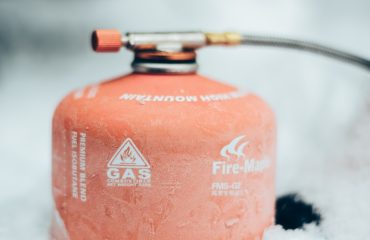body {
font-family: sans-serif;
line-height: 1.6;
}
h1, h2, h3 {
color: #333;
}
h1 {
font-size: 2.5em;
}
h2 {
font-size: 2em;
}
h3 {
font-size: 1.5em;
}
API 5L is a globally recognized standard for line pipes, crucial for the safe and efficient transportation of fluids like oil and gas. This comprehensive guide delves into the intricacies of this standard, providing a clear understanding of its applications, specifications, and significance across various industries.
Understanding the API 5L Standard and its Applications
The American Petroleum Institute (API) 5L specification covers seamless and welded line pipes intended for high-pressure applications in the oil and gas industry. These pipes are used extensively in pipelines transporting crude oil, natural gas, refined petroleum products, and other fluids. The standard outlines the requirements for manufacturing, testing, and inspection to ensure the pipes meet the stringent demands of these critical applications. The versatility of API 5L pipes extends beyond the energy sector; they find use in various industries where high-strength, durable, and reliable piping is essential. These applications include water transmission, slurry transport, and even some industrial processes requiring robust piping systems.
Key Specifications and Grades Defined in API 5L
API 5L specifies various grades of line pipe, each designed to meet specific strength and performance requirements. These grades are categorized based on their yield strength, tensile strength, and other mechanical properties. The grade designation, such as L80, X70, or PSL1, indicates the pipe’s minimum yield strength. For example, L80 indicates a minimum yield strength of 80,000 psi (pounds per square inch). The PSL (Pipe Strength Level) designation further refines the grade, indicating additional requirements for specific properties and testing. Understanding these grades is essential for selecting the appropriate pipe for a given application, considering factors such as operating pressure, temperature, and environmental conditions. The standard also details specifications for pipe dimensions, tolerances, and surface finish.
Manufacturing Processes and Quality Control in API 5L
API 5L pipes undergo rigorous manufacturing processes and quality control checks to ensure they meet the required specifications. Seamless pipes are produced through processes like hot-rolling and piercing, while welded pipes are manufactured using various welding techniques, such as electric resistance welding (ERW) or submerged arc welding (SAW). Each manufacturing stage is subject to stringent quality control measures, including inspections for defects, dimensional accuracy, and metallurgical properties. Non-destructive testing (NDT) methods, such as ultrasonic testing (UT), radiographic testing (RT), and magnetic particle testing (MT), are employed to detect internal and external flaws. These extensive quality control measures are crucial for ensuring the integrity and safety of the pipelines.
Testing and Certification Procedures for API 5L Pipes
Before being released for use, API 5L pipes undergo a series of rigorous tests to verify their compliance with the standard. These tests include tensile testing to determine yield strength and tensile strength, bend testing to assess ductility, and impact testing to evaluate toughness at low temperatures. Hydrostatic testing is performed to verify the pipe’s ability to withstand internal pressure. Furthermore, chemical composition analysis is conducted to ensure the material meets the required specifications. Independent third-party certification bodies often audit the manufacturing processes and testing procedures to ensure compliance with API 5L and to issue certificates of compliance. This certification provides assurance to pipeline operators and other stakeholders that the pipes meet the required quality standards.
The Significance of API 5L in Pipeline Construction and Safety
API 5L plays a critical role in ensuring the safety and reliability of pipeline systems worldwide. The stringent requirements of the standard help prevent failures that could lead to environmental damage, property damage, and loss of life. By specifying the required materials, manufacturing processes, and testing procedures, API 5L contributes to the design and construction of robust and dependable pipelines capable of withstanding harsh operating conditions. The standard’s global recognition and acceptance facilitate the use of consistent quality materials in pipeline projects across different countries and regions. The use of certified API 5L pipes is often a regulatory requirement in many jurisdictions, emphasizing the standard’s importance in ensuring pipeline safety and environmental protection.
In conclusion, understanding the API 5L standard is vital for anyone involved in the design, construction, or operation of pipelines. Its comprehensive specifications and rigorous testing procedures ensure the integrity and safety of these critical infrastructure components. The continued adherence to API 5L contributes significantly to the safe and efficient transportation of fluids worldwide.
SEO-Friendly Tags:
- API 5L
- Line Pipe Standard
- Pipeline Construction
- Oil and Gas Pipelines
- API 5L Grades




